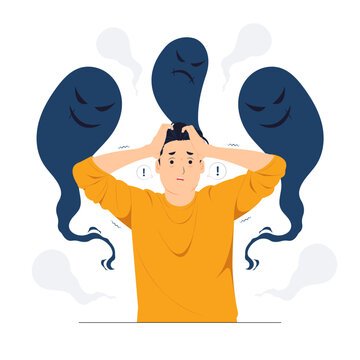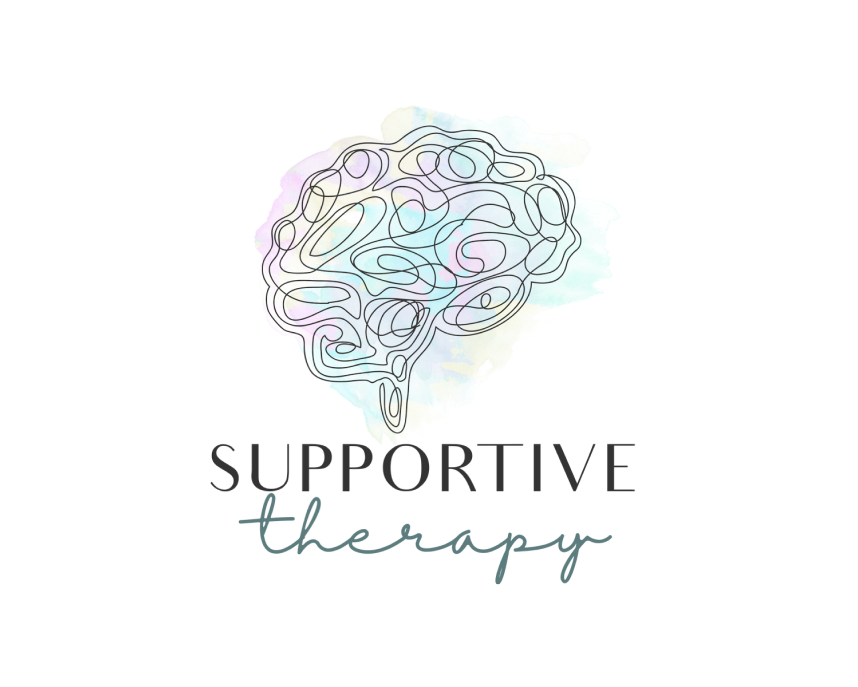Home » The Complete Guide to CBT » CBT for Schizophrenia
CBT For Schizophrenia
Find hope and healing with CBT. Learn how this therapy can help you or a loved one manage schizophrenia and lead a better life.

What is Cognitive Behavioural Therapy?
Cognitive Behavioural Therapy (CBT) is a well-established, evidence-based approach to mental health treatment. In fact, it is often regarded as the gold standard in psychotherapy.
Grounded in decades of clinical research, it focuses on identifying and restructuring negative thought patterns, beliefs, and behaviors to promote more constructive ways of thinking. It is used for a broad spectrum of mental health conditions, including anxiety, depression, eating disorders, schizophrenia, and substance use disorders.
Cognitive Behavioural Therapy (CBT) is grounded in three core principles:
- Unhelpful thoughts: Negative thinking patterns shape how we perceive ourselves, others, and the world.
- Learned behaviors: Maladaptive habits can reinforce emotional distress and distort reality.
Positive change is possible: With the right tools and support, individuals can learn healthier ways of thinking and behaving, leading to improved well-being.
How Does CBT Address Schizophrenia?
In the 1980s, Cognitive Behavioural Therapy (CBT) began to gain recognition as a valuable treatment for schizophrenia. Prior to this, schizophrenia was primarily viewed as a medical condition, with psychological factors largely ignored. The emergence of the “stress-vulnerability” model shifted this perspective, highlighting that schizophrenia involves an interaction between biological, psychological, and social factors.
While medication remains the first line of treatment, CBT works to address all of these dimensions by helping patients better understand their experiences and respond in more adaptive ways. Rather than eliminating symptoms outright, CBT focuses on managing distress, improving coping skills, and strengthening the patient’s sense of control.
Main Objectives of CBT for Schizophrenia
CBT offers practical strategies to tackle the complex symptoms of schizophrenia, with the goal of improving both mental health and overall functioning. It focuses on 10 key objectives:
Reduce Distress from Psychotic Symptoms:
Through various techniques like cognitive restructuring and behavioral experiments, patients can better understand and cope with the emotional impact of their symptoms, such as distressing hallucinations, even if the symptoms themselves are not fully eliminated.
Challenge and Reframe Maladaptive Beliefs:
CBT helps patients identify and challenge distorted thoughts commonly seen in schizophrenia, such as paranoia or self-blame, by using methods like Socratic questioning. By reframing these beliefs into more realistic or manageable interpretations, patients can reduce anxiety and build healthier thought patterns.
Improve Reality Testing:
One of the main goals of CBT is to help individuals distinguish between their psychotic experiences and reality, which schizophrenia often blurs. Through structured behavioral experiments, patients gain the tools to test their beliefs and perceptions, fostering a stronger sense of what is real and what is influenced by their symptoms.
Enhance Coping Strategies:
Patients learn practical coping tools to manage intrusive thoughts and voices. Techniques such as distraction, thought-stopping, and cognitive reframing help them develop strategies for tolerating challenging symptoms, improving their ability to function in daily life.
Promote Medication Adherence:
CBT addresses fears or misconceptions about medication, helping patients understand its role in their treatment and encouraging consistent use, as patients with schizophrenia often discontinue use of their medication.
Reduce Negative Symptoms:
Negative symptoms like apathy, social withdrawal, and lack of motivation are often challenging to address. Through interventions such as behavioral activation, patients are encouraged to re-engage with daily activities to regain a sense of normalcy.
Build Insight into the Condition:
Understanding schizophrenia is crucial for patients’ self-acceptance. By providing psychoeducation, we can help individuals understand how a combination of biological, environmental, and psychological factors contribute to their symptoms, reducing stigma and promoting acceptance.
Decrease Risk of Relapse:
Preventing relapse is a top priority. Through CBT, patients learn to recognize early warning signs of symptom exacerbation, enabling them to take proactive steps to manage their symptoms and seek support before a full relapse occurs.
Improve Social Functioning:
Social skills training (SST) is a key intervention for improving communication and relationship building. By focusing on practical skills like starting conversations and reading body language, patients become more confident in social interactions.
Foster Empowerment and Hope:
By setting achievable goals and using self-monitoring techniques, patients can gain a sense of control over their mental health journey. This builds confidence, autonomy, and hope for the future, empowering them to take an active role in their recovery.
While each patient is unique, our clients often experience significant improvements in these key areas, gaining better control over both their symptoms and their lives. CBT provides a comprehensive, personalized approach to treatment that empowers individuals to lead more fulfilling lives.
Techniques That Can Be Used in CBT Sessions
CBT sessions for schizophrenia go beyond talk therapy. They use hands-on techniques that help people make sense of their experiences, manage distress, and build confidence in their daily lives.
Cognitive Restructuring
Patients use cognitive restructuring as a guide to help question their beliefs, such as “I have to do whatever the voices say,” using Socratic questioning. They explore alternative perspectives, assess the strength and origin of the voices, and gather evidence for and against their thoughts (e.g., “What would someone else think about this belief?”).
Reality Testing
Patients conduct behavioral experiments such as noting whether predicted negative events actually occur when they ignore a voice’s command. These activities help challenge the idea that voices are all-knowing or powerful.
Normalizing Psychotic Experiences
Therapists provide psychoeducation that voices can arise in many contexts like grief, trauma, or sleep deprivation. Knowing that such experiences are not uncommon helps reduce fear and stigma.
Coping Strategy Enhancement
Patients develop highly personalized coping strategies such as walking, listening to music, or writing down what the voices say. These techniques offer immediate relief and promote a sense of control during episodes.
Thought Monitoring
Patients track their experiences using the ABC model: (A) the activating event, such as hearing a voice; (B) their beliefs or thoughts about the voice (e.g., “It’s a demon trying to control me”); and (C) the emotional and behavioral consequences (e.g., fear, isolation).
Behavioral Activation
Therapists support patients in resuming meaningful activities, like cooking or calling a friend. This combats negative symptoms such as a lack of motivation and helps re-engage them with daily life.
Psychoeducation
Patients learn about the stress-vulnerability model and how biological and psychosocial factors contribute to psychosis. This helps patients understand their experiences without self-blame.
Attention Switching
Patients are taught to redirect their attention from internal voices to external tasks, such as focusing on sounds in the room or holding an ice cube. This reduces the emotional intensity of hallucinations.
Relapse Prevention Planning
Therapists and patients identify early warning signs like withdrawal or sleep issues. Together, they create a practical plan that includes calming strategies to prevent full relapse.
Imagery Rescripting
Patients learn how to reimagine distressing images or hallucinations. For example, turning a threatening voice into a cartoon character. This process reduces the emotional impact of traumatic or disturbing content.
Graded Exposure
Patients with paranoia or social anxiety are gradually exposed to feared situations. For instance, someone who avoids buses due to delusional beliefs might start by watching one from a distance, then progress to riding short routes.
Activity Scheduling
Therapists work with patients to build structured daily routines. Activities like brushing teeth, walking the dog, or journaling are reintroduced step by step to create consistency and purpose.
Mindfulness Techniques
Patients practice observing thoughts and voices without reacting, telling themselves, “that’s just a thought, not a fact.” These techniques help reduce distress and increase emotional regulation in response to psychotic symptoms.
How Can I Help a Loved One Living with Schizophrenia?
Supporting someone with schizophrenia can be overwhelming, especially when symptoms change unpredictably. Some helpful tips are to learn their early warning signs, like disrupted sleep or social withdrawal, so you can help them seek support sooner. During episodes, stay calm and grounded. Focus on stability rather than solutions. There are no perfect words to make hallucinations go away, but staying calm, being present, and gently reminding them of reality can be very helpful.
You can also encourage daily routines that bring a sense of normalcy, like shared meals or walks, but let them set the pace. Offer practical help, such as organizing appointments or running errands, while respecting their independence.
Most importantly, be someone they can say “I’m not okay” to without fear of judgment. That kind of trust can make a huge difference on the hardest days. And remember, your own well-being matters too! Set boundaries, seek support, and take breaks when needed. Helping someone else starts with taking care of yourself!
Schedule a Free Consultation
If you or a loved one is facing the challenges of schizophrenia, know that help is available. Cognitive behavioural therapy offers effective strategies to manage symptoms, improve daily life, and create stability.
Reach out for a free consultation with Supportive Therapy and start your journey toward better mental health today.
Frequently Asked Questions
Keeping an eye out for warning signs, like changes in sleep patterns, mood, or thoughts, can help you catch potential issues early. Planning for tough times, like stressful events, can help you manage your stress better and feel in control. Reducing your stress, keeping hobbies you enjoy, maintaining relationships, and connecting with peer support to help manage symptoms and improve overall well-being.
Keeping an eye out for warning signs, like changes in sleep patterns, mood, or thoughts, can help you catch potential issues early. Planning for tough times, like stressful events, can help you manage your stress better and feel in control. Reducing your stress, keeping hobbies you enjoy, maintaining relationships, and connecting with peer support to help manage symptoms and improve overall well-being.

